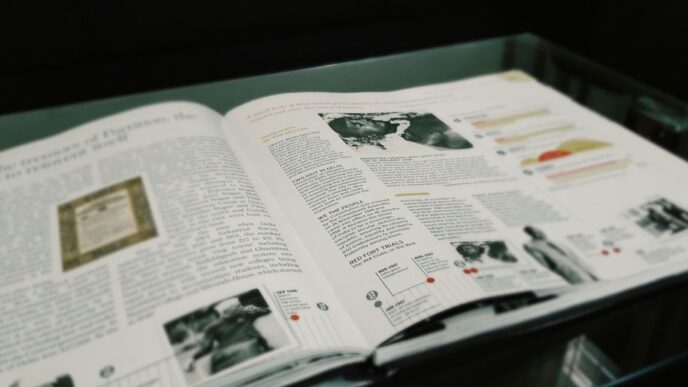Unlock the potential of AI and neuroforecasting in transportation to revolutionize efficiency, safety, and sustainability. Discover the promising applications beyond automation in this captivating article. Explore the benefits, challenges, and future scenarios of these cutting-edge technologies in the transportation industry.
INTROUCTION
Are you ready to embark on an innovative journey to revolutionize the transportation industry? Join us as we dive into the fascinating world of artificial intelligence (AI) and neuroforecasting, uncovering a multitude of possibilities beyond automation. In this article, we will explore how these cutting-edge technologies can enhance efficiency, safety, and sustainability in transportation. Fasten your seatbelts and prepare to be amazed by the promising applications that lie ahead!
Introduction to AI and Neuroforecasting in Transportation:
The transportation industry is on the brink of a revolution, thanks to the emergence of artificial intelligence (AI) and neuroforecasting. AI has been widely used for automating tasks such as route planning and scheduling in transportation. However, its potential stretches far beyond mere automation. AI can optimize pricing strategies, predict demand patterns, and even detect fraudulent activities.
Neuroforecasting is a groundbreaking field that combines neuroscience techniques with forecasting. By analyzing brain activity data, neuroforecasters can make accurate predictions about future events. This powerful technology has the potential to transform the transportation industry by providing valuable insights into consumer behavior and enabling precise predictions of future trends.
Benefits of AI & Neuroforecasting in Transportation
AI and neuroforecasting hold great promise for revolutionizing the transportation industry. By leveraging data and AI capabilities, these technologies can significantly improve safety, efficiency, and sustainability in the transportation sector.
Let’s delve into some of the key benefits of AI and neuroforecasting in transportation:
1. Increased Safety:
AI plays a crucial role in enhancing safety. By analyzing data from sensors and cameras, AI systems can identify potential hazards on the road and provide real-time warnings to drivers. Moreover, the development of autonomous vehicles powered by AI can significantly reduce accidents caused by human errors.
2. Improved Efficiency:
AI has the potential to optimize traffic flow and routing, leading to reduced congestion and time savings for commuters. Additionally, AI-powered logistics systems can help businesses optimize their supply chains and minimize delivery times.
3. Enhanced Sustainability:
AI can contribute to a more sustainable transportation system. By reducing traffic congestion, AI helps to lower emissions from vehicles stuck in traffic jams. Furthermore, AI can facilitate the improvement of public transport systems and the promotion of shared mobility solutions, ultimately making transportation more sustainable in the long run.
Applications of AI & Neuroforecasting in Transportation:
The future of transportation lies in autonomy, electrification, and connectivity. To fully unlock the potential of these technologies, it is crucial to understand how AI and neuroforecasting complement each other in creating a safe, efficient, and sustainable transportation ecosystem.
AI can be utilized to develop predictive models of traffic flow and identify potential congestion hotspots. This valuable information can then be used to optimize routing and enable real-time schedule updates, proactively preventing gridlock.
On the other hand, neuroforecasting leverages brain activity data to predict changes in traffic patterns and driver behavior. This knowledge can greatly improve route planning and traffic management.
By combining AI and neuroforecasting, transportation can transcend its traditional reactive approach and transition to a proactive one, where problems are anticipated and prevented before they occur.
Challenges Faced By AI & Neuroforecasting in Transportation:
While AI and neuroforecasting offer immense potential, they also encounter various challenges when applied to transportation. One major challenge is the availability and quality of data. AI and neuroforecasting rely on comprehensive and accurate data, which can be scarce and fragmented in the transportation domain. Obtaining reliable data is essential to ensure accurate predictions.
Another challenge stems from the dynamic nature of transportation systems. With constant changes occurring in transportation, it becomes challenging for AI and neuroforecasting models to adapt and keep up
with evolving conditions. Additionally, variations in transportation systems across different locations pose difficulties in generalizing predictions.
Furthermore, ethical concerns surround the use of AI and neuroforecasting in transportation. There are apprehensions regarding the potential control or manipulation of individuals through these technologies, as well as the potential for misuse or abuse.
Solutions for the Challenges:
Fortunately, emerging fields like AI and neuroforecasting offer potential solutions to the challenges faced by the transportation industry.
AI presents opportunities to make vehicles smarter and more efficient. It can develop advanced traffic management systems to reduce congestion and delays. Moreover, AI enables the creation of autonomous vehicles capable of safe navigation without human intervention.
Neuroforecasting, by leveraging brain activity data, can help in anticipating and planning for traffic congestion or accidents. It can also facilitate the development of novel routing algorithms to enhance transportation speed and efficiency.
Possible Future Scenarios with AI & Neuroforecasting:
AI and neuroforecasting have the potential to bring about revolutionary changes in transportation. Here are some possible future scenarios:
1. Increased efficiency and safety in transportation systems:
AI and neuroforecasting can optimize routes, schedule maintenance, and predict traffic congestion, leading to heightened efficiency and safety in transportation systems.
2. Personalized transportation:
AI and neuroforecasting can provide personalized transportation options based on individual preferences and requirements. This will make commuting more convenient and tailored to each person’s needs.
3. New modes of transportation:
AI and neuroforecasting could pave the way for the development of innovative transportation modes, such as flying cars or underwater trains, transforming the way we travel and commute.
4. Intelligent infrastructure:
AI and neuroforecasting can facilitate the construction of intelligent infrastructure capable of automatically adapting to changing conditions, such as weather or traffic. This would result in more resilient roads, bridges, and other infrastructure components.
Conclusion
AI and neuroforecasting have the potential to revolutionize the transportation industry, enhancing efficiency, safety, and cost-effectiveness. Organizations should consider incorporating these technologies into their digital transformation strategies to unlock their limitless possibilities. The future of transportation holds unprecedented levels of performance and innovation through AI and neuroforecasting. It’s time to embrace this exciting journey towards a transformed transportation network.













